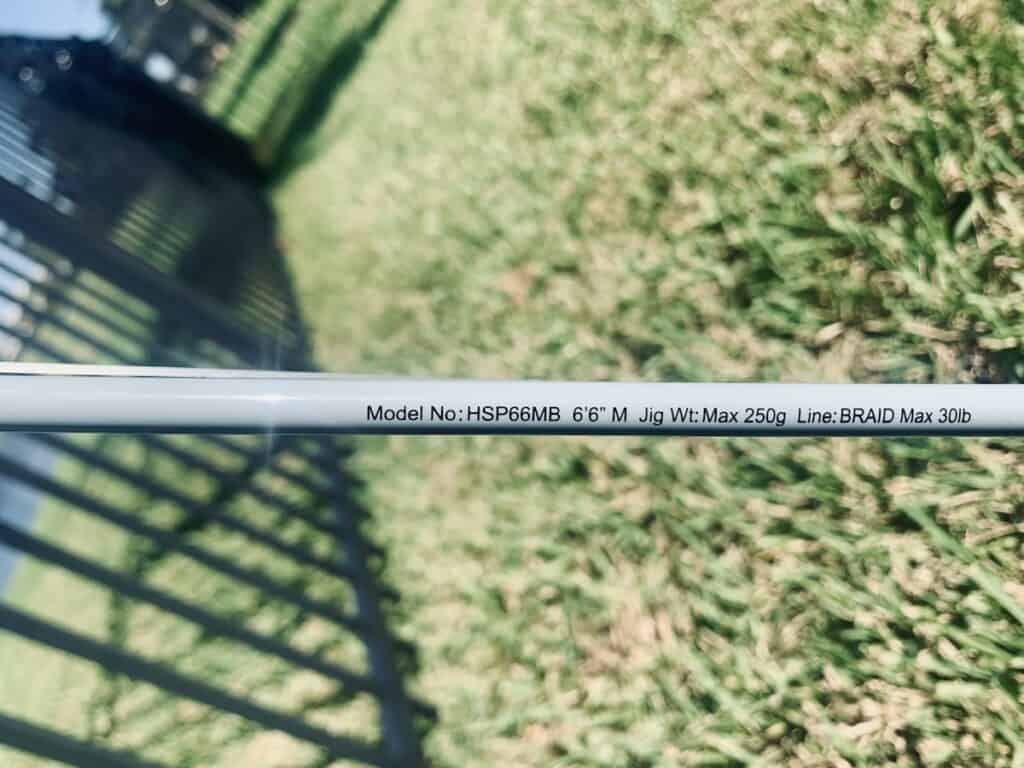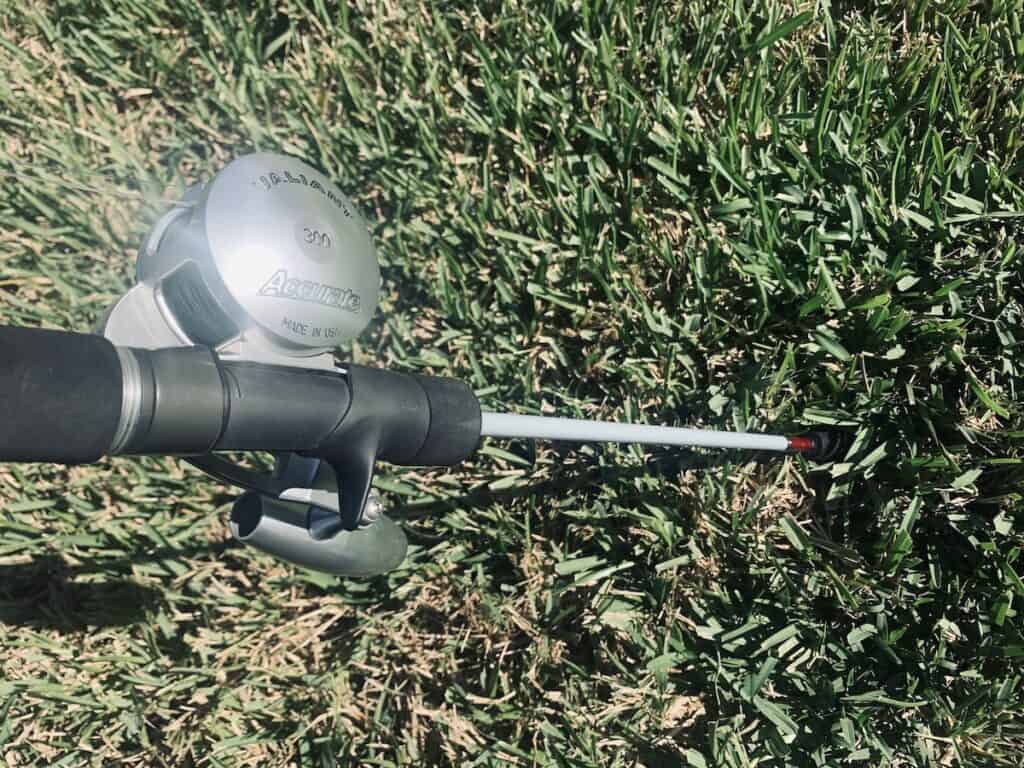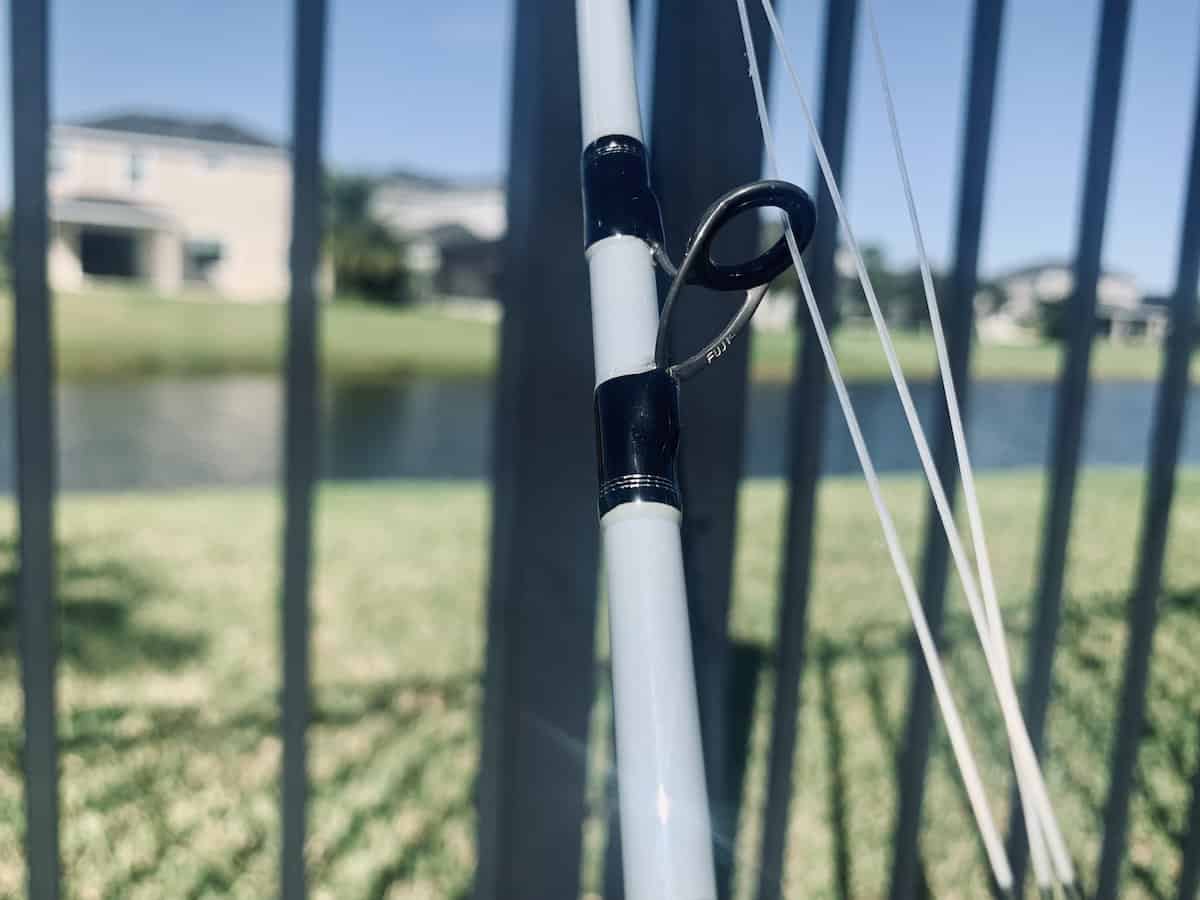Slow pitch jigging requires specific tackle to properly perform the method. The rod is one of the most important parts of the slow jigging setup. It’s important for the rod in slow pitch jigging to be flexible enough to give a nice parabolic bend back and forth during the motion. The rod is normally held under the angler’s armpit or under the forearm and so a long butt section is also key. Fortunately for consumers, slow pitch jigging rods are also usually labeled as such.
In this article, I’ll talk through the features to look for in a slow pitch jigging rod and how they help anglers perform the technique. I’ll also talk through some of the slow jigging rods on the market, so you can decide which one you’d like to buy.
Should You Buy a Conventional or Spinning Rod for Slow Pitch Jigging?
The conventional or spinning decision is mainly dictated by the type of reel that works best for the technique. For slow pitch jigging, a conventional reel gives the angler many advantages. The technique is performed by letting a jig fall to the sea floor in freespool, then the rod is jerked up and the rod tip is slowly pointed back down while the jig falls again. Controlling the freespool is very important for the technique.
With a conventional setup, an angler is palming the reel sideplate with his or her fingers wrapped around the rod. The angler’s thumb applies pressure on the spool to slow down or speed up the rate of freefall. With a spinning reel, there is no reasonable way to control the rate of freefall. An angler can pinch the line as it’s coming off the reel, but this can be dangerous with braid and it is far less ergonomic because you’d have to do this while your other hand holds the rod and reel.
My article Slow Pitch Jigging Reels discusses how to choose a slow pitch jigging reel and compares several products available on the market. As for this article, the primary conclusion to understand is that a conventional reel is the way to go, and you’ll need to pair that reel with a conventional rod.
How Do I Know What Lure Rating is Good?
A lure rating is normally provided as a rod spec for slow pitch jigging rods. You’ll want your rod to work well with the size lure you’ll be using most often, with some margin for when you’ll use a larger jig. For anglers new to the technique, it can be hard to guess what size jig you’ll use most often.
A good rule of thumb is to assume you’ll use 100g of jig for every 100ft of water. You may need to increase the size when the current or wind is strong. If you’re most often going to stay under 200 ft of water, you can assume that jigs ranging from 180g – 230g will be your normal peak size. My article How I Chose My Slow Pitch Jigging Rod, Reel and Jigs talks about how to choose a jig for the setup.

What Rod Power for Slow Pitch Jigging?
Rod power is directly related to the lure rating. As the lure rating increases, the power gets heavier. Many levels of rod power will work for slow pitch jigging, the important part is to choose the rod model with a lure rating that corresponds with the jigs you’ll typically use.
Anglers new to the technique may hesitate when choosing a rod based on lure rating. When you’re in the store, you’ll notice that these rods are feather light and noodle-y. Honestly, many anglers are nervous to commit to buying such a flimsy feeling rod to pull big fish off the bottom. If you’re anxious about this, I recommend watching some YouTube videos of fishermen doing the technique to see for yourself how these flimsy rods can horse in some big fish.
Line Rating for Slow Pitch Jigging
Line rating is another common spec listed on slow pitch jigging rods. When looking at these ratings, you must understand that slow pitch jigging is a light tackle technique, and you’ll rarely use higher than 30 lb test line. Some anglers will use heavier line in deeper waters for bigger fish, but it’s actually more beneficial to go lighter in deeper waters because of the line’s smaller diameter and ability to cut through water with ease.
I always spool my slow pitch jigging reels with 30 lb test and tend to look for 30 lb test as the line rating. Keep in mind the line rating is a range, and it would be acceptable for the range to be 20-40lb test and use 30 lb test line. To learn more about why braid is best for slow pitch jigging, read my article Is Braid or Mono Best for Jigging?
What Rod Action is Best for Slow Pitch Jigging?
The rod action can vary, between manufacturers, but it is important that the rod is bendy enough to give a nice parabolic bend when the rod is pulled up. Slow pitch jigging rods should bend a lot, all the way down to the butt end of the rod. In theory this sounds like slow action, the reality is that most slow pitch jigging rods are listed as moderate action.
A rod with action that’s too fast will not bend enough to create the rhythmic up and down movement needed for slow pitch jigging. This is one of the main reasons why slow pitch jigging requires its own specialty setup to properly execute the method.
Rod Length for Slow Pitch Jigging
Usually slow pitch jigging is done with an angler working the jig over the edge of a boat. Around a 6 ft rod will give enough clearance from the edge of the boat, while still giving you a chance to reasonably store the rod. Some anglers will go slightly shorter and 5’9” and some will go a little longer at 6’6”. An even longer length can be important if you’re going on a party boat, so this recommendation is intended for personal boats.
It’s also rare that slow pitch jigging rods are used for anything else. Casting can benefit from a longer length, but we are not talking about a multi-use rod. Slow pitch jigging rods are specialty rods intended for slow pitch jigging.
Split Grip is Best for Slow Pitch Jigging
As mentioned earlier, the rod must be able to bend all the way through to the butt end. A bulky full grip will prevent the rod from bending at the butt section. For this reason, nearly all slow pitch jigging rods will have a split grip with the rod blank exposed in the middle. The split grip also keeps the rod lightweight and more comfortable to pin under an armpit or under your forearm.

Trigger Reel Seats Are Best for Comfort
When slow pitch jigging, the angler is palming the small and narrow conventional reel. A trigger reel seat is common to help with gripping the setup for extended periods of time.
Rod Blank Construction
It can be difficult to find information about a rod’s blank construction, however some of the higher end rods will list the technology used. There are a few common technologies that help improve the strength of a rod, especially under torsional load. Daiwa’s X45 technology and Shimano’s Spiral X Core and Hi-Power X technology are similar in the sense that they wrap the carbon fiber in alternating directions to improve the torsional strength of the rods. Lower end rods, such as the Shimano Talavera Type Slow J are not wrapped with this method. Blank construction technology is typically one of the main cost drivers for fishing rods.
Rod Guides
Rod guides are another primary cost driver for fishing rods. Slow pitch jigging rods always have ring guides because of how critical a light weight is to the method. Specifically, the rod guide frame drives the weight more than the rod guide insert. Titanium is the top of the line and is the lightest weight, yet strongest rod guide frame available.
Silicon Carbide is another ring guide frame material typically used on higher end rods. Lightweight and strong materials drive up the market value of the rod.
Comparing Slow Jigging Rods
Now considering all of these categories, let’s look at a few of the rods on the market. Rather than listing all the models of each rod, I chose ones with similar lure rating to compare.
The Shimano Spiral X and Hi Power X technologies improve the torsional strength of the rod by layering the carbon fiber sheets in an angled fashion. The Daiwa X45 is comparable to this technology.
The Daiwa HVF nanoplus rod technology increases the density of the carbon fiber, which allows the manufacturers to use less resin and therefore keep the weight down.
Looking at the Daiwa Saltiga slow pitch jigging rod, the guides are Fuji LRV, which have titanium frames. This rod is incredibly light weight yet strong, and the guides play a large part in that weight difference. The Shimano Game Type Slow J rod has Fuji SiC guides which are also very good, but one step below Titanium framed guides.
You can see by looking at the table how rod construction and rod guide frame qualities greatly impact the cost of a fishing rod. Everyone’s budget is different, but I encourage you to place emphasis on buying the best rod you can reasonably fit in your budget. The rod is a huge part of slow pitch jigging.
| Shimano Talavera Type Slow J | Daiwa Harrier Slow | Shimano Game Type Slow J | Daiwa Saltiga Slow | |
| Length | 6’6” | 6’6” | 6’6” | 6’1” |
| Jig Max | 300g | 300g | 330g | 300g |
| Line Rating | 50 lb | 40lb | 30lb | 40lb |
| Power | MH | MH | M | MH |
| Action | MF | MF | M | M |
| Grip Style | Split grip | Split grip | Split grip | Split grip |
| Reel Seat | trigger | trigger | trigger | trigger |
| Guides | Seaguide Zirconia | Fuji Fazlite K guides | Fuji SiC guides | Fuji LRV guides |
| Blank Construction | Not angle wrapped | Daiwa HVF nanoplus and X45 | Shimano Spiral-X Core and Hi-Power X | Daiwa HVF nanoplus and X45 |
| Price | $120 | $200 | $420 | $600 |
I have the Daiwa Harrier Slow Pitch jigging rod paired with my Accurate Boss Valiant 300 Slow Pitch Jigging reel with 30 lb braid. I’m currently looking at getting a second setup to use and I have ordered the Shimano Ocea Jigger 1500 spooled with 30 lb braid, and I am leaning towards pairing it with the Shimano Game Type Slow J rod. I love the Daiwa Harrier rod and I think its priced very reasonably at $200. I’ll buy the Game Type J and share a video on my YouTube channel. Of course I would love the Daiwa Saltiga, but that price tag is steep! Tight lines, y’all!

